Chefs love buying and using incredible knives for their tasks and we love providing them with the best knives options to ensure a superb performance at your fingertips.
There might be a significant difference between every single knife out there whether it be its performance, pricing, build quality, or usability. But, every single knife needs resharpening no matter how premium your knife is.
If you aren’t sharpening your knife, you are just ruining your investment. That’s not a good habit for a chef.
Now, professional and advanced chefs care a lot about this thing, but beginners, casual and home chefs aren’t pretty sure on how to sharpen kitchen knives. Eventually, they end up having a dull knife in the end.
If you are some of those who don’t know how to sharpen a kitchen knife, you should not worry as nobody comes trained right out of the womb.
Here we are going to help you out with the recommended options and techniques to make you progressive at sharpening your blades at their best.
There are a couple of methods and options of tools to gently sharpen your knives. Not just that, if you are unable to sharpen your blade yourself, you can also get professional sharpening services.
But, you still need some factors to consider that will also be discussed later. Otherwise, your blade isn’t going to perform any longer. So, without any further ado, sit back to relax & skim through this guide.
The Best Methods on How To Sharpen Kitchen Knives
As we have reviewed almost every single type of Kitchen knife present for our beloved readers, we’ve sectioned this detailed guide as per knife type, specific methods along with some other tips as well. So, if you are looking to sharpen a specific type of knife, you can directly jump into that to save your precious time.
What’s the best way to sharpen kitchen knives?
Depending on one’s case, requirements and expectations, the techniques and methods can also vary to get the best sharpness out of the blade. For example, the way home chefs tend to sharpen their knives may not necessarily work for the butchers or professional chefs.
Sharpening frequency also plays a role in this. If you are regularly sharpening your blade just to maintain its sharpness, honing through sharpening stone wouldn’t give the best results. Alongside, there are a lot of factors of budget. If you are on a limited budget, whetstones work fine. Otherwise, you should go for electric sharpeners if you know how to carefully use that after skimming this guide.
How to sharpen kitchen knives with an electric sharpener?
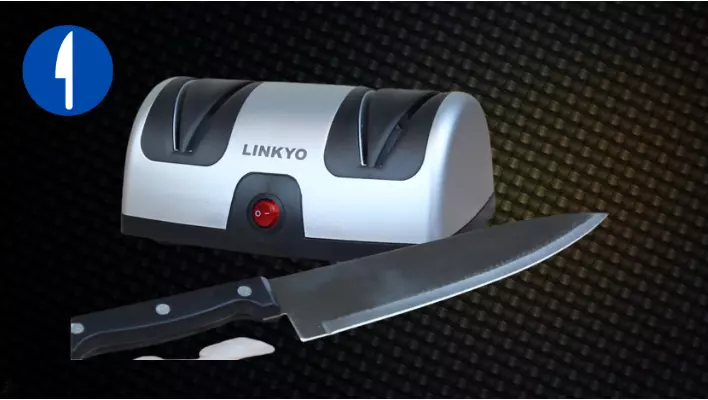
Electric Sharpeners are getting popular day by day due to so many reasons. Although they are a bit on the expensive side, the amount of relaxation and ease they provide is also exceptional especially if you are looking to save your time. Electric sharpeners are comparatively easy to use where an abrasive material powered by a motor sharpens the blade in a matter of seconds.
You just need to switch on your sharpener and put your blade into that without putting pressure on it and move it a little. Later, you will be having a sharp blade. This is ideally the best option for busy chefs. These sharpeners can be used both for sharpening and honing. However, these aren’t perfect either. Bolstered blades require a bit of effort and you should never use them to repair your dull knives.
How to sharpen kitchen knives without an electric sharpener?
As electric sharpeners are comparatively expensive, these sharpeners aren’t a good deal for budget guys. However, you can instead opt for manual sharpeners which aren’t expensive at all. These sharpeners have almost the same mechanism but they aren’t electric. Here, the abrasive wheels are installed inside the cabin creating a room to put your blade into that before sharpening.
Another difference is that you would need to push the blade a bit hard so the wheels would get into contact with the blade to sharpen. Now, these sharpeners aren’t fast but they get the work done. If you are tired of whetstones, these sharpeners are faster than those time-consuming whetstones. The only known drawback of a sharpener is that you can’t repair your blades with it.
How to sharpen kitchen knives with a bench grinder?
The bench grinder is a commonly used machine to deal with extremely dull and near to repair knives. A bench grinder is designed to eventually remove a small layer of steel from the blade to bring new steel on the surface to be sharpened. This initial step is a rough one and you push your blade a little bit harder. However, you need to be a bit careful to bring a good sharpness to it.
A bench grinder is a fast tool that consists of two abrasive wheels rotating at a significantly higher speed. So, you need to care for yourself as well because a single mistake can lead to a severe injury. It is mostly used by professional sharpening service providers and they are considerably affordable. Carbon steel knives are the best ones to use with bench grinders. It is also used for polishing.
How to sharpen kitchen knives with a whetstone?
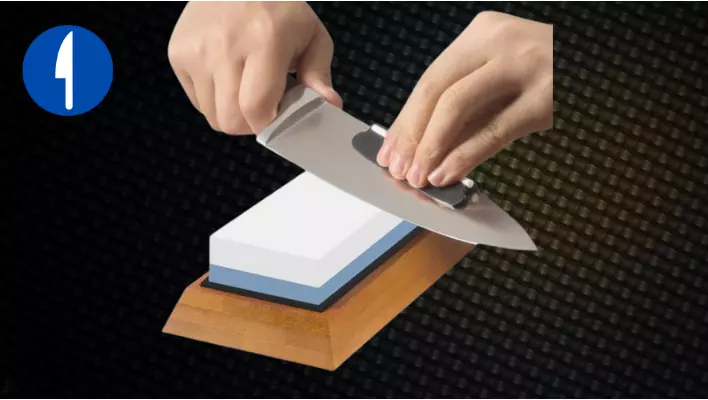
Almost every single chef out there is aware of whetstones and how it works. It is just a piece of abrasive stone with different grit sizes on each side that you use manually to sharpen your blades. These grits are different because one is used to remove a very light layer of material and bring sharpness. However, the other side is used to bring shine and remove scratches out of your blade.
Whetstones are offered in a couple of types that depend on the abrasive material. This could be a ceramic, diamond, and a couple of others as well. They are lightweight and easy to use. However, whetstones take a lot of time but the sharpness lasts for a good time and precision is also considerably good. If you want to practice sharpening knives, Whetstone is the best start to master this art.
How to use a sharpening stone for kitchen knives?
First of all, you need to figure out the required sharpness for your knives so you can get the recommended grit size with that whetstone or sharpening stone. A fine grit of around 4000-8000 would be best if your knife is regularly used and you want to maintain or restore its sharpness.
You need to soak your whetstones in the water at least for 30 minutes so it would perform better without taking a lot of effort. With the soaked whetstones, you will be removing a very little material to bring the sharpness on its cutting line which is the best thing about a whetstone. After a couple of strokes, you will love its blade. More detail will be shared in the very last sections of this guide.
How to sharpen Japanese kitchen knives?
Japanese knives are considerably expensive but feature an exceptional sharpness to make them perform. These knives are designed on single bevels but they aren’t easy to maintain especially when it comes to resharpening. Here, double bevel Japanese knives come into play that we would also recommend. You should be sharpening your Japanese knives at least once per week.
We would strongly recommend sharpening your Japanese knives with whetstones. As Japanese knives are expensive, you should expect good longevity. With a whetstone, less material would be removed to bring a sophisticated sharpness on the surface. Moreover, the best Japanese knives hold an angle of around 15° for each of its sides that would be maintainable through a whetstone.
How to sharpen Henkel kitchen knives?
Though Japanese knives are exceptional, German knives are also popular due to their good performance and affordable pricing. As Whetstones were recommended for Japanese knives, we would again recommend it for Henckel which is a prominent Western knives brand even though you can use other tools as well. There would not be a lot of difference in these techniques or methods.
Follow the same steps that we mentioned above. Here, you need to maintain an angle of up to 20° for a single side. After 07 to 08 strokes, you will get a burr that you need to remove and dry carefully. Now, recheck its sharpness and if you are satisfied, you are good to go. Otherwise, play with a few more strokes.
How to sharpen cheap kitchen knives?
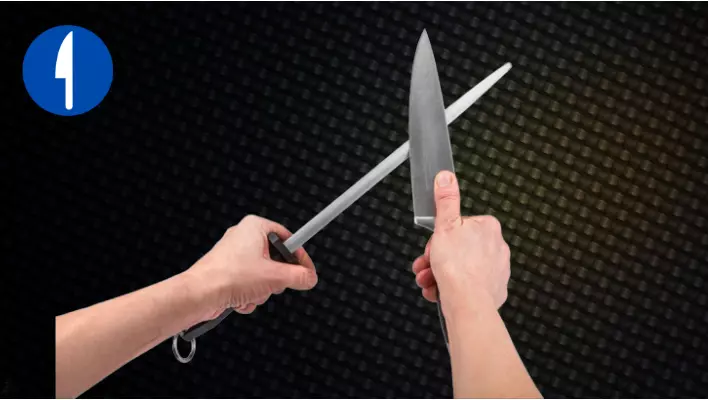
Cheap or stamped kitchen knives don’t hold their sharpness for a long time and you need to resharpen them frequently. Otherwise, they are likely to dull easily. Stamped kitchen knives are usually flexible which makes them partially difficult to sharpen especially with a whetstone. However, there are still some other ways. The process might be even slower, but it will still get you the job done.
First, you should try sharpening your stamped knives with the sharpening rod. These rods are inexpensive and can last for a long time if used properly. You don’t even need a professional sharpening service for a stamped blade if you opt for a rod. Alongside, you can also use electric sharpeners that also work well with it.
How to sharpen dull kitchen knives?
Dull kitchen knives can easily be sharpened through sharpening steel which is the best method. You need to get the right grit of your whetstones. Ideally, 1000 to 3000 grit size works best with dull kitchen knives. For that, you first need to soak that whetstone in water and then start sharpening your knife on it. You would need to get around 10 strokes with a maintained angle.
Then, simply remove the burr and dry that out. Now, check if you are okay with this sharpness. If you don’t repeat the step until you get your ideal range of sharpness. Later, you simply need to use fine grit whetstone to remove scratches and bring shine to the blade. Must wash and dry your knife before using it.
How to sharpen a cleaver?
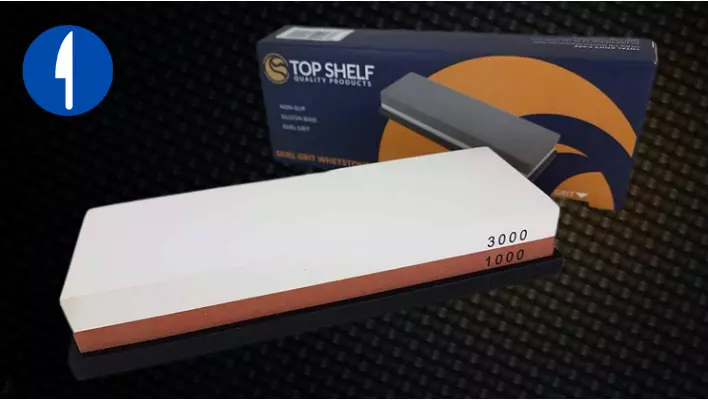
Sharpening a chef knife may not be a big deal, but resharpening a cleaver is not a joke especially if you have never tried this before. Cleavers are bigger and stronger knives that are often sharpened at 22-28° for each side to provide an optimal sharpness at your fingertips. The only exception could be its edge in which you don’t need to put a lot of effort as it is not used frequently.
Carbon steel cleavers come with an exceptional edge that makes resharpening a bit easy. For your cleavers, you should be using a whetstone of 1000 to 3000 grit size in to and fro strokes. Always start from its heel and go towards its tip without disturbing the angle for accurate sharpening.
How to sharpen kitchen shears?
Kitchen shears are very assistive members in a kitchen fleet which is often neglected when it comes to resharpening. Because chefs believe they don’t need to resharpen it frequently. It is partially true, but you would still need to resharpen at least once a month. Of course, it is a bit more technical, but you should do it.
For that, you need to unassemble your kitchen shears if it’s extremely dull. Otherwise, you don’t need to open it. After parting off your shears, put that shear on a whetstone. The coarser side is better as it has a different range of bevel. Now, put your shears in the forward stroke and keep going at least for 10 strokes.
Then, it is time to remove the burr and clean the knife before checking out the sharpness level. If you are satisfied with this sharpness, now flip the whetstone and put your shears on fine grit to remove scratches and reassemble your shears.
How to sharpen a steak knife?
Steak knives are some of the busiest knives in western cuisine as you will be using these knives almost every day and maybe multiple times to cut the prepared meat in the right size. Sharpening your steak knives is as important as sharpening the rest of your kitchen knives.
Ceramic whetstones work best to sharpen a steak knife. Most of the time, steak knives are stamped instead of being forged due to economical pricing. Using diamond abrasives will lead to higher removal of material to bring a new surface. The best would be to use 1000 grit size if you are resharpening it after a very long time. Besides these things, follow the exact process to examine the sharpness.
How to sharpen a serrated knife?
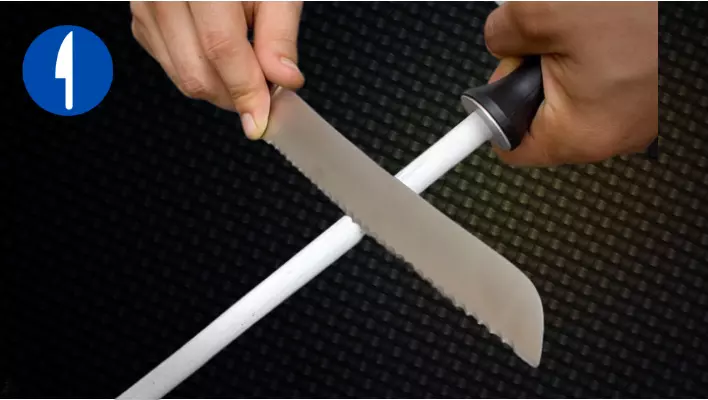
Resharpening a serrated knife seems to be a challenge for many chefs which is also true to some extent. However, we would be making it simple and effective that you would love. Serrated knives are also known as bread knives due to their serrated teeth to make you productive while cutting pieces of bread and buns.
To sharpen your serrated blades, you can use manual and electric sharpeners along with whetstones or honing rods depending upon the blade condition. Both ceramic and steel hone works decently with these blades. However, don’t push your knife harder as serrated edges are a bit fragile to bend easily.
How to sharpen a serrated knife with an electric sharpener?
For serrated or bread knives, you can use electric sharpeners which is the fastest way to get it done. You simply put your knives in the chamber with the cutting length penetrated that. The rest of the work is performed by the machine itself. There are also a couple of other methods if you don’t have an electric sharpener. Again, you should never apply a lot of pressure on its serrated blade.
Where to have kitchen knives sharpened?
Now, this thing also varies on a lot of factors but you need to look at it for yourself to get an idea of operational knife sharpening services. These services are much cheaper than an individual setup but you might have to wait in a long queue in order to get your work done. This queue could also be up to a week in some cases.
If you are around NYC or Manchester, The Sharpest NYC and CTSharpening would be the best choices. Other than that, you can consult your nearby physical store.
What angle to sharpen kitchen knives?
To get a precise, straight and flawless cutting experience, your knife should strictly follow a certain range of angles for its blade to be sharpened. For Japanese chef knives, this bevel could be somewhere around 10-15° on each side and up to 22° for western knives. You will be having a nice and clean cut on these two ranges.
What grit sharpening stone for kitchen knives?
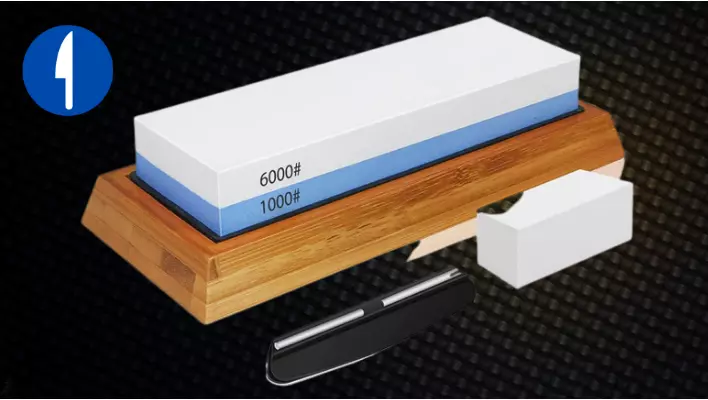
If your knife is dull for a long time or you want to repair it in order to get a new edge, you should be using whetstones of 1000 to 3000 grit size. For finishing or maintaining your knives, whetstones with a grit of 4000 to 8000 are recommended. 6000 grit Whetstone is fine and it is used for removing scratches to bring shine.
How to keep your kitchen knives sharp?
Well, this is a debatable query, to be honest. There could be a lot of things to keep your knives sharp if followed. You should be sharpening your knives at the proper time instead of sharpening them too frequently or not sharpening them at all. Always use the right tool as per your knife type because not every sharpening tool is universal. Such as Whetstones or manual sharpeners for forged knives.
The right technique of sharpening also plays a key role in long-lasting sharpness. Don’t put a lot of pressure on the blade while sharpening through whetstone, honing rod, or bench grinder as it would bend or even break your blade. Always take care of your knife by properly washing it manually instead of dishwashers.
How often do you sharpen kitchen knives?
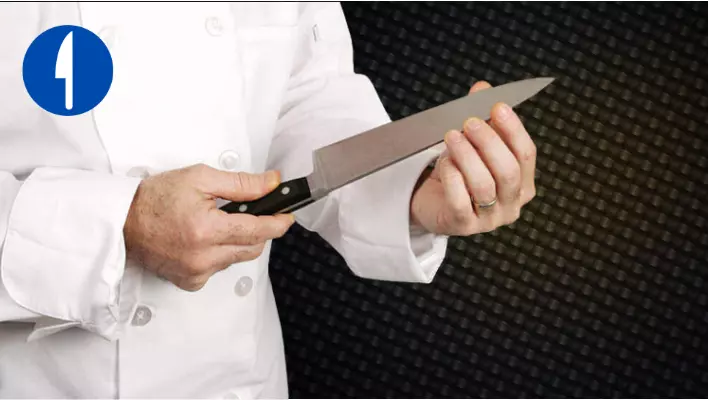
Honing can be done every time after using your knife two or three times and there is no problem with that. As far as casual or professional knives are concerned, you can resharpen them as early as once a week if you are a busy chef. However, you should always resharpen your knife at least once in 3-4 months even if you haven’t used it for a long time. This will help in maintaining its sharpness.
Wrapping Up | How to Sharpen Kitchen Knives
Just like lubricating your car engine is necessary, the same goes for a kitchen knife for chefs. You don’t need to lubricate your knife but sharpen it as it works as fuel for that in order to keep them responsive and rocking out there on the kitchen countertop. Even if you have got the most expensive knife, it is never going to perform unless it is sharp enough. But sharpening itself is an art and not everyone is aware of how to sharpen kitchen knives without destroying their blades.
If you want a long-lasting sharpness for your knife, you must resharpen it regularly. A sharp knife is meant to provide good productivity with a better workflow. A dull knife on the other hand is a bit risky to use other than its poor productivity. In any case, you need to sharpen your knife and we have explained some of the best methods to sharpen every single type of kitchen knife at its best.